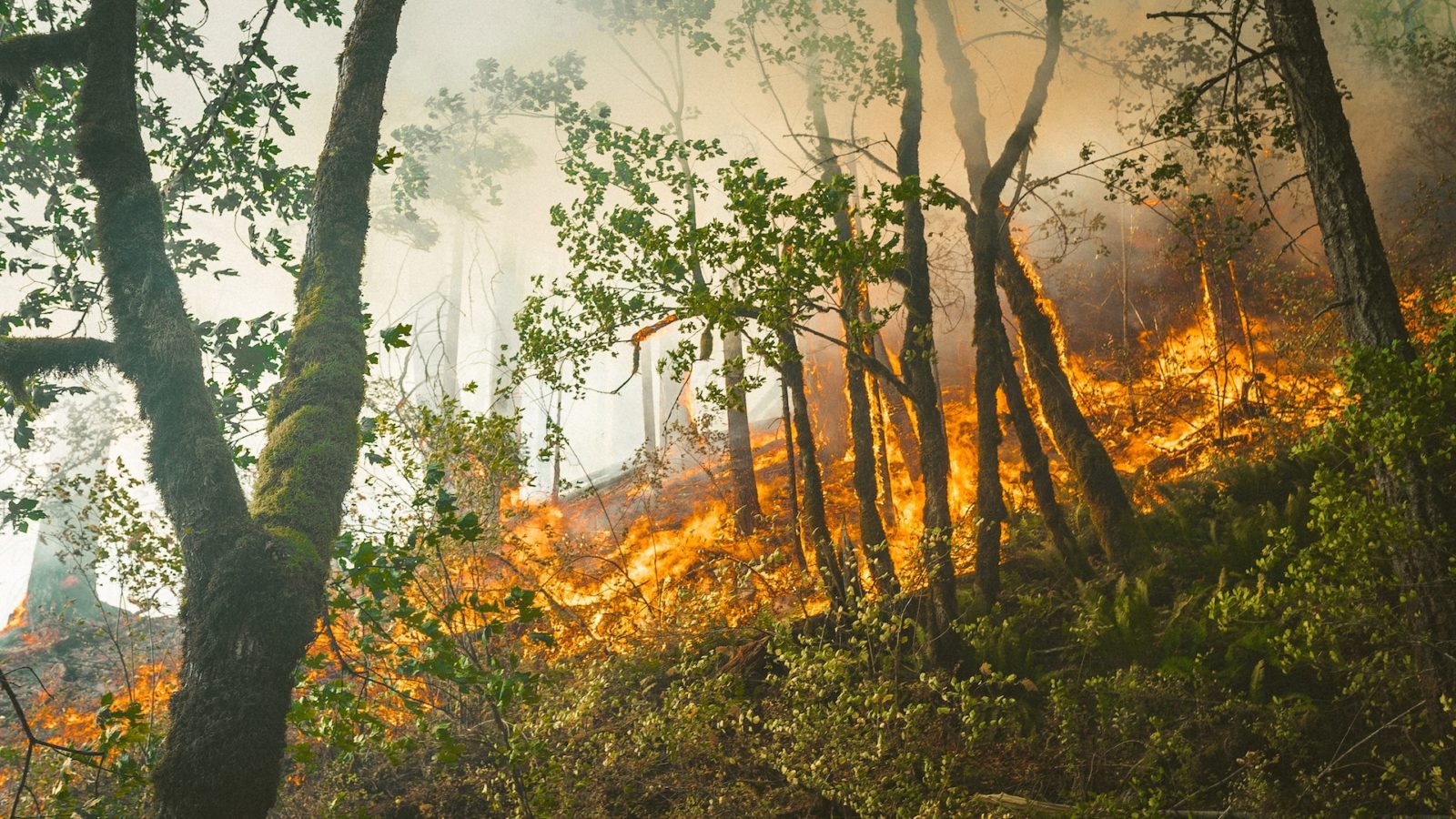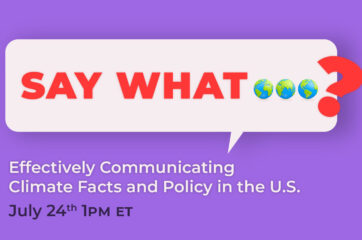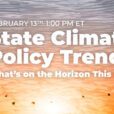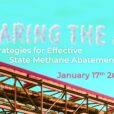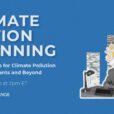As the West Coast erupts into an ever-increasing inferno of devastating wildfires, we bear witness to the realities of living in, and with, the climate crisis. This is only a glimpse into what the future will increasingly look like, which doesn’t just manifest in the California, Oregon, and Washington wildfires. It’s also present across our oceans in the form of marine heat waves and an exceedingly active hurricane season, as well as the heat dome that covered most the U.S. this summer. This is all occurring as our country and the world grapple with the immense human loss from the coronavirus pandemic and the economic crisis that has stemmed from it.
With over 80 major wildfires currently burning across the West Coast, the harsh realities of a warming world are at our front door. According to the California’s Department of Forestry and Fire Protection, this year’s “wildfires have burned over 3.3 million acres in California, which is larger than the State of Connecticut.” The most recent updates report that wildfires have burned over five million acres across California, Oregon, and Washington. While the climate crisis may not be the root cause of these extreme weather disasters, scientists have been able to conclude, with growing confidence, that climate change plays a significant role in driving both the intensity and scale of these incidents.
Climate change as a positive feedback loop
This year, we’ve seen a cascade of effects derived from the climate crisis with unprecedented, record-breaking weather events occurring one after another, or even simultaneously. This cascade effect typically relates to the concept of feedback loops, which can be either positive or negative. A positive feedback loop, somewhat counterintuitively, works in a way that an action or input into a system actually enhances the effects or changes that occur as an output — in a climate context this means that the releasing of planet-warming gases can in turn trigger processes that cause more warming. A negative feedback loop, on the other hand, does the opposite and tends to diminish or mitigate the effects of the changes brought on by the system.
With climate change, we’re experiencing a number of positive feedback loops that exacerbate the impacts of this crisis, from the decline of ice sheets that help to reflect heat from Earth’s surface, to the thawing of permafrost that leads to the release of planet-warming gases. California, specifically, is prone to wildfires — we’ve known that for a long time — but now we’re seeing changes in the severity and frequency of those wildfires because of positive feedback loops.
The way it plays out in California is that climate change makes events like heat waves more common and extreme. Last month, temperatures in the state peaked at 130℉, and were succeeded by another heatwave at the start of September that reached 121℉ in Southern California. This leads to the land becoming extremely dry, and inherently more flammable, which, paired with the absence of rain, creates the perfect conditions for wildfires. Oregon is experiencing almost the same thing, where historic wildfires are tearing through the state and experts have attributed that to shifting weather patterns driven by an altered climate.
Climate change might not be what sets the states ablaze, but the conditions it creates allows that single spark to quickly transform into a catastrophic incident that comes at a cost of both human and natural life. Not to mention the smoke from these fires contains many of the same planet-warming gases driving the climate crisis, further contributing to the loop by adding more pollution into the atmosphere. Wildfires feed off of climate change, and climate change feeds off of wildfires — it’s a continuous and terrifying loop.
A similar feedback loop to what we’re seeing on the West Coast played out this summer in Siberia, when temperatures reached 100.4℉ and reports of widespread fires had broken out across the ecosystem. Siberia, a stretch of tundra situated within the Arctic Circle and known for its frigid conditions, is supposed to be one of the coldest places on Earth, and yet we’re seeing abnormally warm temperatures that carry massive implications.
As Siberia heats up, its ice and permafrost melt. Permafrost is, by definition, land that has been frozen for at least two years, but a lot of Earth’s permafrost has been frozen for thousands of years. When permafrost thaws, it releases gases that have long been trapped in the soil into the atmosphere. Scientists estimate that there is approximately 1,460–1,600 billion tons of carbon stored in permafrost around the world, and with the Arctic warming rapidly, these emissions enter the atmosphere and further drive the climate crisis.
Implications for social and environmental justice
The ongoing wildfires not only have serious environmental and climate implications, they have human ones as well. Over the past few years, as wildfires have increasingly ripped through the state, insurance companies in California have shown a newfound reluctance to issue, renew, or even honor policies for homeowners in high risk wildfire areas. If insurers aren’t directly stripping their policies from homeowners, they’re raising the cost and making it harder to get coverage. In 2019, California addressed this issue by implementing a year-long moratorium that forbade insurance companies from canceling policies to particular areas that had been hit by wildfires. While the solution is sufficient for the short-term, a more comprehensive conversation around insurance and the present and future valuation of climate impacts has yet to be had. These wildfires have exposed a burgeoning justice issue when it comes time to safeguard communities in the face of growing impacts from the climate crisis.
Another problem for Californians intersects with both wildfires and the climate crisis: affordable housing. A rising number of people are starting to build homes and communities on the outskirts of urban areas because of the high cost of living. These areas, termed “Wildland-Urban Interface” (WUI), are areas where nature and construction meet, and, because of their tendency to be more rural, put people at a higher risk for exposure to wildfires. This transition to these areas is partly because the state is growing exponentially, but also partly because of their massive affordability issues.
The California state government provides municipalities with economic incentives to increase their stock of housing, specifically affordable housing, and these areas are usually the locations for new construction. There also tends to be a lot of pushback on building affordable housing in urban areas from residents. This practice, coupled with the heightened risk for wildfires and the barriers to becoming insured in these areas, seems as though disproportionate impacts are almost baked in.
Although the wildfires are plaguing the West Coast, the impact is felt throughout the country. The smoke from these wildfires not only severely affects those in close proximity, it gets taken up in jet streams where it’s carried far and wide, even reaching as far as the East Coast. As we take the necessary precautions to prevent the spread of COVID-19, which preys on compromised immune systems and respiratory functions, wildfire smoke is emitting harmful pollutants into the air that then travel thousands of miles. The impact of wildfire smoke varies greatly depending on the fire and what it incinerates in its path, but it usually carries its fair share of toxic pollution that can impact the very systems we need to fight off COVID-19. This raises the risk of contracting the virus and puts the health of millions on the line as we cope with the wildfires and pandemic simultaneously.
It’s not forest management, it’s climate change
While the West Coast burns, media outlets and political leaders continue to ignore the connection between these fires and the effects of a warming world. Analysis of broadcast news outlets revealed that only 15% of wildfire media coverage over Labor Day weekend mentioned climate change in relation to the fires, while only 4% made the same connection during California’s August wildfires.
In a briefing with California state officials this week, California’s Natural Resources Secretary Wade Crowfoot voiced concerns about focusing solely on forest management and ignoring the role of climate change in driving these events. President Trump pushed back on these concerns by claiming, “It’ll start getting cooler, you just watch.” Secretary Crowfoot responded, “I wish science agreed with you,” to which President Trump followed up with “I don’t think science knows, actually.”
While improving forest management is undoubtedly one element of the comprehensive solution needed to help mitigate wildfire risk, it’s in no way a silver bullet. Not to mention that most of California’s forested land is managed at the federal level, with 57% falling under the purview of federal agencies and a mere 3% controlled and managed by the state. If forestry management is the root of the issue, funding and efforts to make those changes have to come from the top-down.
In the face of historic wildfires across multiple states, an already present and looming climate crisis, and a pandemic, we have dissent from scientific consensus and integrity at some of the highest levels in our government. We have to combat these vicious cycles at their root, and we can start by addressing the climate crisis and it’s innate injustices. To continue to ignore this fact is not only costing the lives of Americans at this very moment, it’s setting up our future generations for hardships that we can solve today — all we need is the will to do so.

